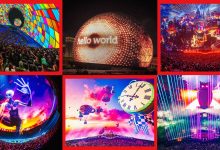MELBROUNE, AUSTRALIA– Ricci Meldrum, executive partner at TBWA\Melbourne has been named, managing director of TBWA\Melbourne with immediate effect.
With more than 25 years in the industry, Ricci has been instrumental in leading brands to success; driving business and behavior changing ideas that move the world forward. None more so than ANZ.
“Ricci has been at the helm of the ANZ business for over six years. She is one the country’s finest Advertising Practitioners. Respected by clients, loved by staff and energised by creativity. Ricci will continue to lead the ANZ business in conjunction with her stellar team and will work in partnership with our executive group on broader agency initiatives,” said Kimberlee Wells, chief executive officer, TBWA\Melbourne & Adelaide
Paul Reardon, chief creative officer, TBWA\Melbourne & Adelaide commented, “If you want to make some of the most rewarding work of your career, work with Ricci Meldrum. She’s amazing.”
Ricci’s work has been awarded in creative and effectiveness award shows the world over with 23 Cannes Lions across 12 individual campaigns including a coveted Cannes Lion Grand Prix. With experience from Finance to Food and almost everything in- between, Ricci’s industry impact has been acknowledged locally and globally, including WON Report ranking as the #5 Account Service in the world.
On her appointment, Meldrum said “TBWA\Melbourne is a special place and I feel privileged to take on the managing director role of an agency that simply is like no other (and I’ve been around the industry for long enough to know!).
“I’m excited by what the future holds as we all look forward to a new year. My passion for creativity, drive for effectiveness and a firmly held belief in nurturing individual potential, combined with the incredible talent of our team and trust from our clients, will see us continue to stand out in the industry.”








